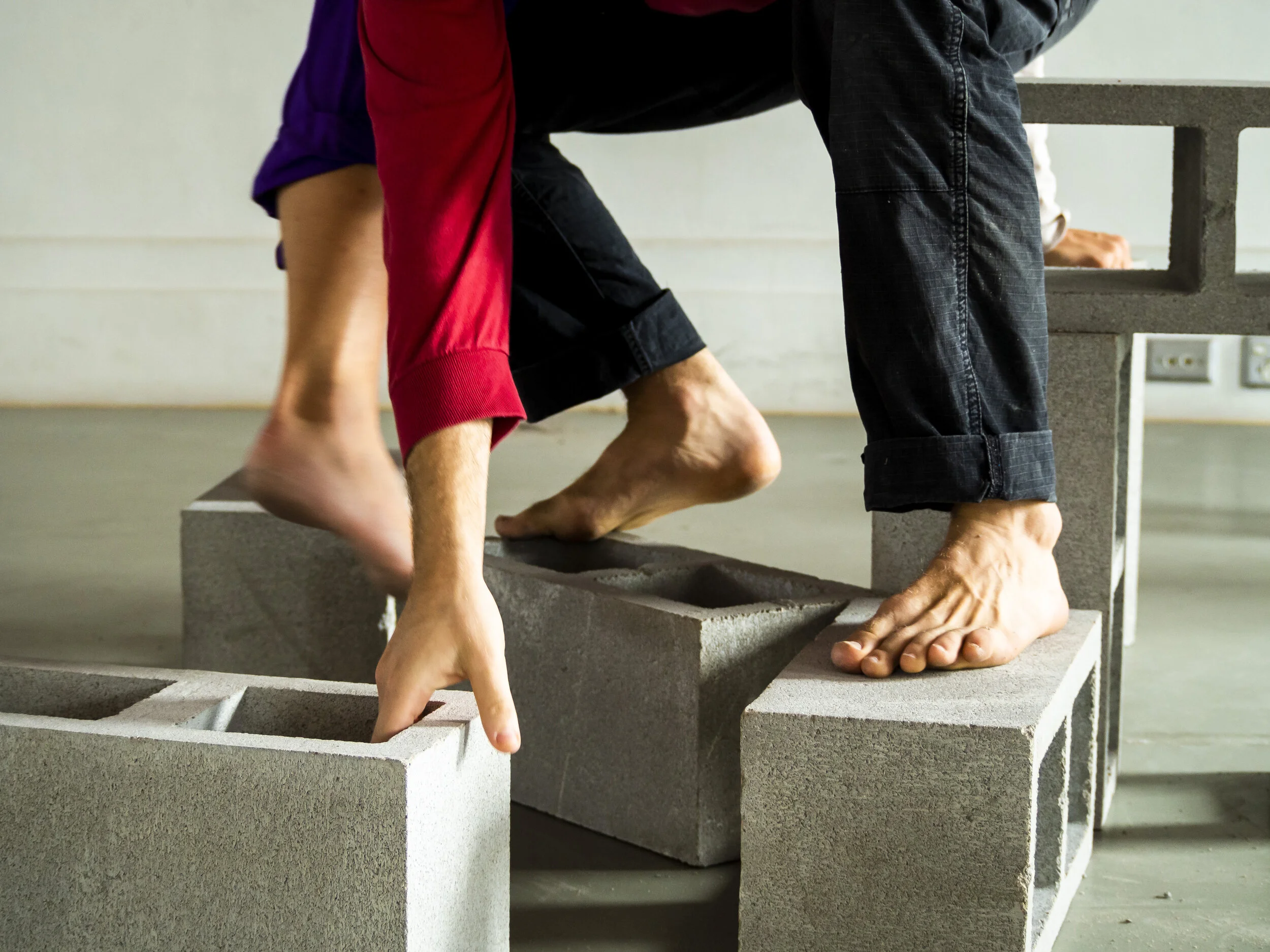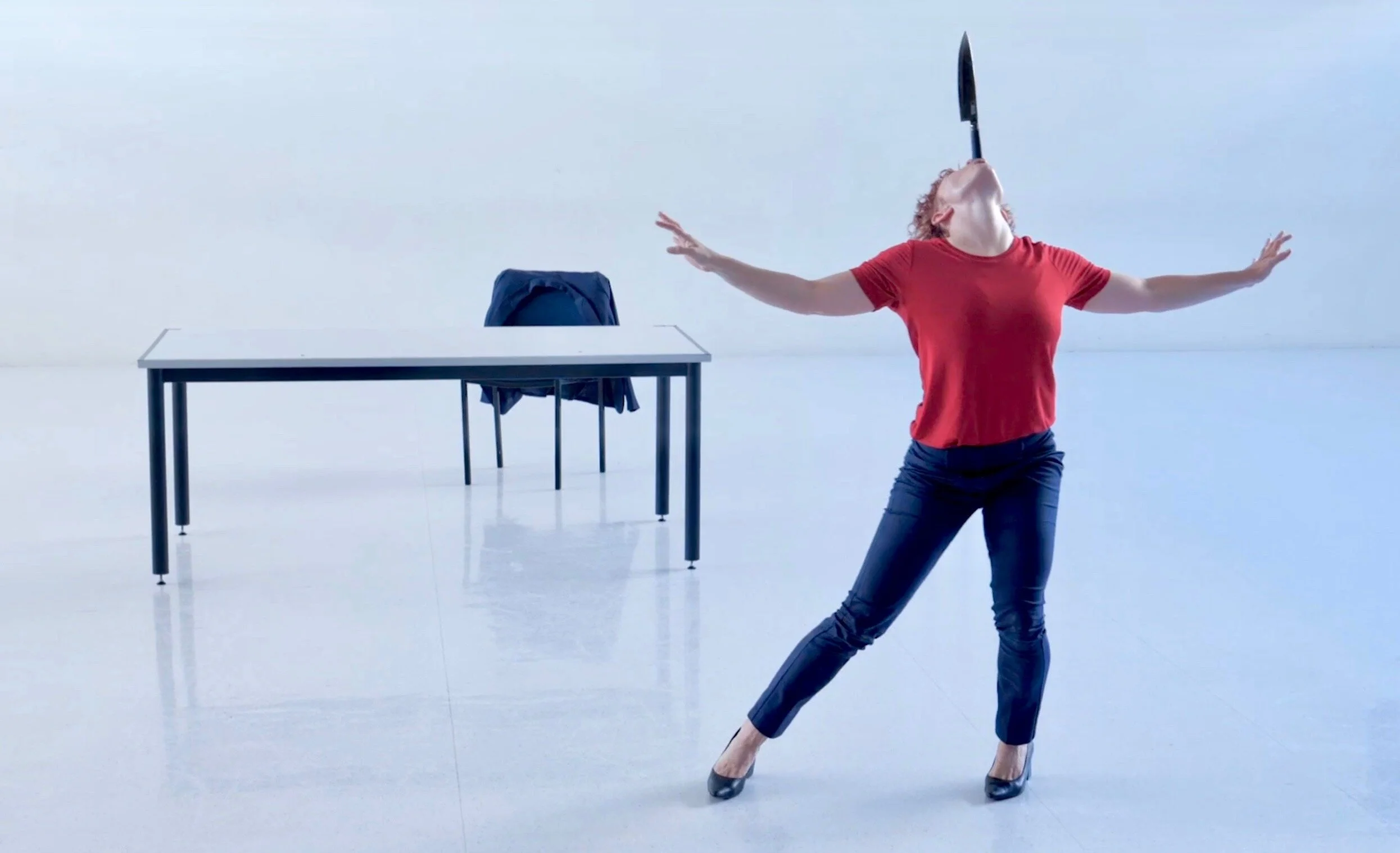Text by Leisa Prowd
I am continually questioning the idea of, “What is dance?” When I say, “I am a dancer” the question that usually follows is, “What form of dance do you do?” Up till now, I have hesitated to call myself a dancer. I am, for the most part, untrained. I have not studied dance history, techniques, choreography, methodologies nor philosophies. I haven’t trained for years, competed, auditioned or been part of a renowned company; all the appropriate boxes I felt I needed to tick to be allowed the title of dancer.
There is also still the expectation that a dancer has a specific body type, able to execute complicated steps in a choreographed routine after intense training since childhood.
I was born with achondroplasia, the most common form of dwarfism, characterized by short limbs and a larger head. Traditionally, my body type is not sought as an example of a principal dancer in a company or even considered a member of the ensemble.
No matter how hard I train my body it is simply not mechanically designed to execute a Grande arabesque or a penche!
At the age of five, I was enrolled in my first dance class. Ballet Classes were being held at the local Community Hall. My mother sent me because I was a girl and ballet was one of the things mothers wanted for their daughters back in the early seventies. I loved ballet class, despite the fact I was terrified that my mother would leave me there and forget to pick me up again. I would be exercising at the barre, shedding anxious tears, while my eyes were fixed on the place my mother was sitting.
The ballet school staged a pantomime of Alice In Wonderland at the local Regent Theatre that year. I was cast as an oyster for the Quadrille and as the Dormouse and given the honour of performing the only solo in the show.
I still remember many aspects of the performance in vivid detail – waiting in the foyer to be wheeled through the audience in a giant teapot by the Mad Hatter and the March Hare, the music I performed to, the applause and laughter of the audience, the photo call for the local newspapers afterwards.
It remains one of my fondest memories and ignited a love for dance that would never leave me.
My ballet classes were short lived. When we moved interstate from the East Gippsland town I was born in, my mother didn’t enrol me in ballet classes again; despite me asking. I accepted that as a large family surviving on a single wage, we simply couldn’t afford it. It was hard to invest money in an activity that would only be ever be a hobby and not a career path; especially when there were (eventually!) nine mouths to feed!
During my teenage years, I didn’t attend any formal dance training however I would revel in dance units during Physical Education at school as I knew I could be on a level playing field with other students. As an adult I tried adult Hip Hop Classes at my children’s Dance and Drama School, simply loving the chance to move my body to a beat with other bodies.
It wasn’t until I joined Weave Movement Theatre in 2014 and the Rawcus ensemble in 2016, both inclusive Dance and Movement Theatre companies, that I finally had the opportunity to delve into dance on a more professional level. I have gained insights from other disabled dancers such as Caroline Bowditch of Scottish Dance Theatre and Marc Brew from Axis Dance Company, two Australian-born dancers who are changing the face of dance on an international level.
I accompanied Caroline Bowditch to Skånes Dansteater, Sweden in June 2019 to engage in a series of workshops with other disabled dancers from throughout Europe.
Under the theme, ‘Unexpected Bodies in Unexpected Places’, we asked questions around how disabled artists can occupy and own spaces, challenging conventions to initiate play and experimentation. It was a life-changing experience regarding my own personal practice and determination to become a professional artist in my own right. Collaborating with other dance makers, receiving and giving choreographic feedback and being able to devise work was an opportunity I have sadly found rather scarce in Australia. I realise that I too, have a responsibility in this. Overcoming my own self-consciousness surrounding my physicality and becoming a presence in the Public Programs of renowned Melbourne Dance Companies gives other dancers the opportunity to experience working with other diverse bodies and experiences.
Yumi Umiumare, a Japanese born Butoh dancer and choreographer in Australia for almost 30 years, introduced me to Butoh in 2014. Through Butoh I embarked on a journey fueled by the fascination of my own physicality. Being intensely curious about my own body’s responses to emotion and instinct, sound, space, time and other dancers in the space has led me down a path of never-ending exploration. Butoh has enabled me to go deep within, exploring different states and levels of consciousnesses. different feelings in the body. I’ve followed pathways by becoming interested in breath and the tiniest of tremors. I’ve taken myself to the edge of what I’ve known and then leapt out into the unknown. I’ve basked in the light and explored darkness; breath and breathlessness, suffocation and the release of energy scrambling for that sharp intake of oxygen in a gasp. I’ve opened myself to constructive and critical feedback. I’ve discovered the movements I default to and have abandoned them to bring out the unfamiliar, the uncomfortable and the scary. I’ve discovered that I don’t have to be 18, super trained and lithe. I move in the body I’m in, revelling in it. I’ve finally fallen in love with it. I’ve landed in my skin
I have learned that dance encompasses so much more than choreography. Dance is simply the movement of bodies through and in space in response to something unseen. There are no limits to dance although despite this, when it comes to disability, limits still exist. Even in 2020 there are still very few or no opportunities for disabled dancers to receive professional training and pathways beyond community led dance classes. Systemic discrimination means that there are still assumptions about people with disabilities – that they either a) can’t dance, b) aren’t interested in dance or c), if their disability occurs mid-career, they must give up dance completely. Nothing could be further from the truth. We simply need to return to the questions at hand, “What is dance and who is a dancer?”
Even as a self-identified disabled dancer I often return to these two fundamental questions. One of my most fascinating experiences in the rehearsal room with a room full of diverse dancers is the invitation to copy other movements. How does one body that mobilizes on two legs capture the same fluidity of a dancer in a wheelchair who glides effortlessly across a space? I have observed these dancers in action and find myself wishing that I could move with such grace- in the same way I have watched tall, lithe bodies experiment with the folding and unfolding of limbs that, to my eye, seem to extend forever.
What is it also to embody the repetitive motions of a dancer who harnesses their own involuntary movements to create a new movement score? As a dancer I have found enormous potential in being curious, following tremors and opening to spontaneity through voluntary and involuntary responses. What a wealth of new movement scores might we compose through working with dancers with cerebral palsy, who are just as passionate about dance as any other dancer who has been given the professional pathways to explore their practice? I feel that it is about dance makers relinquishing control; letting go of the expectations of what the dance should look like and become open to the unlimited potential of what it could be if we let diverse dancers simply inhabit the space.
Caroline Bowditch says, "When you're visibly disabled, you are always performing,“ People with disabilities “perform” daily to a public that is curious and watching; a public who still sees it as their right to question us about our bodies and our experience – sometimes intimate questions that one stranger would not normally ask another.
Lately, I have been working with the idea that I need to free myself of the expectation that I should be educating the audience about the difference. My presence on stage is often seen as a lesson in positivity and resilience for non-disabled people. There are times my experience as a short-statured woman feeds into my dance expression, however I dance simply because I love to. I dance because it is a part of me and within the dance I am truly myself; unafraid and held by something outside myself that I trust.
Things have got to change within the arts scene and the dance world, especially in Australia. We need to radically rethink the ideas surrounding who gets to create and what bodies are seen and celebrated publicly. There needs to be boldness. There needs to be work that challenges and confronts.
Different voices need to be heard and different bodies need to be seen. How much richer can dance be if we value unexpected bodies in unexpected places doing unexpected things!










